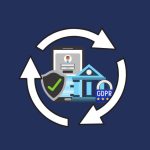SAP Rebate Management is a crucial tool for businesses looking to optimize their pricing strategies, enhance customer relationships, and drive profitability. It enables organizations to manage complex rebate programs efficiently, ensuring accurate calculations, tracking, and settlement of rebates. However, to harness the full potential of SAP Rebate Management, businesses must follow best practices and utilize the tool effectively.
Understand Your Business Requirements:
Before diving into SAP Rebate Management, it’s essential to have a comprehensive understanding of your business’s unique rebate requirements. Different industries and companies have varying rebate structures and goals. By defining your objectives, you can configure SAP Rebate Management to align with your business needs.
Streamline Data Integration:
Efficient data integration is critical for the success of your rebate management processes. Ensure that SAP Rebate Management seamlessly integrates with your ERP (Enterprise Resource Planning) system to access real-time data. This enables accurate calculations and up-to-date rebate information, minimizing errors and disputes.
Configure Accurate Business Rules:
Configure SAP Rebate Management to match your specific business rules and pricing strategies. Tailor the system to calculate rebates accurately based on your defined criteria, such as sales volumes, product categories, or customer segments. Precision in rule configuration minimizes discrepancies and ensures that you provide the right incentives to your customers or partners.
Regularly Review and Adjust Rebate Programs:
Market dynamics and business goals can change over time. It’s crucial to continuously review and adjust your rebate programs to stay competitive and responsive to market trends. SAP Rebate Management provides the flexibility to modify existing rebate agreements or create new ones as needed. Regularly assessing the effectiveness of your rebate programs allows you to fine-tune your strategies for maximum impact.
Monitor Performance and Compliance:
To ensure that your rebate programs are delivering the desired results, establish robust monitoring and reporting mechanisms within SAP Rebate Management. Track the performance of your rebate agreements, including how they impact sales, margins, and customer satisfaction. Moreover, closely monitor compliance with the agreed-upon terms to prevent disputes and discrepancies.
Automate Processes:
One of the primary advantages of SAP Rebate Management is its ability to automate various rebate-related processes. Leverage automation to streamline calculations, approvals, and settlements. Automation not only saves time but also reduces the risk of human errors, which can be costly in rebate management.
Enhance Collaboration:
Effective communication and collaboration with your customers, suppliers, or partners are key to successful rebate management. SAP Rebate Management offers features that enable you to collaborate seamlessly, share rebate details, and provide transparency to all parties involved. Improved collaboration can lead to stronger relationships and greater trust in your rebate programs.
Selecting the best Rebate Management software helps businesses seeking to optimize their rebate programs and drive profitability. By understanding your business requirements, configuring the system accurately, and following best practices, you can harness the full potential of SAP Rebate Management. Regularly reviewing and adjusting your rebate programs, monitoring performance, and fostering collaboration will help you stay competitive and responsive to market changes. With the right approach and attention to detail, SAP Rebate Management can become a valuable asset in your pricing and revenue optimization strategies.









